Black history icons rest in this Charlotte cemetery. It’s one man’s dream to preserve it.
After the pastor gives his final amen, while members of Moore’s Sanctuary AME Zion Church file out the front entrance, William Hill heads out back to the church’s small cemetery.
On these sacred grounds, Hill finds peace. It’s where some family members are buried. The names of his grandmother, mother and aunts are engraved in some of the withered tombstones dating to 1844.
“We wanna preserve the cemetery for our grandchildren, our children, for future generations,” Hill said, looking down a line of six bouquets of flowers left by his wife for each of his aunts.
Though the cemetery has a personal connection for Hill, it’s important for Charlotte Black history, too.
Charles Sifford, the first Black golfer to play on the PGA Tour and recipient of the Presidential Medal of Freedom, is just one of many icons buried in the Moore’s Sanctuary cemetery who brought honor to the Queen City.
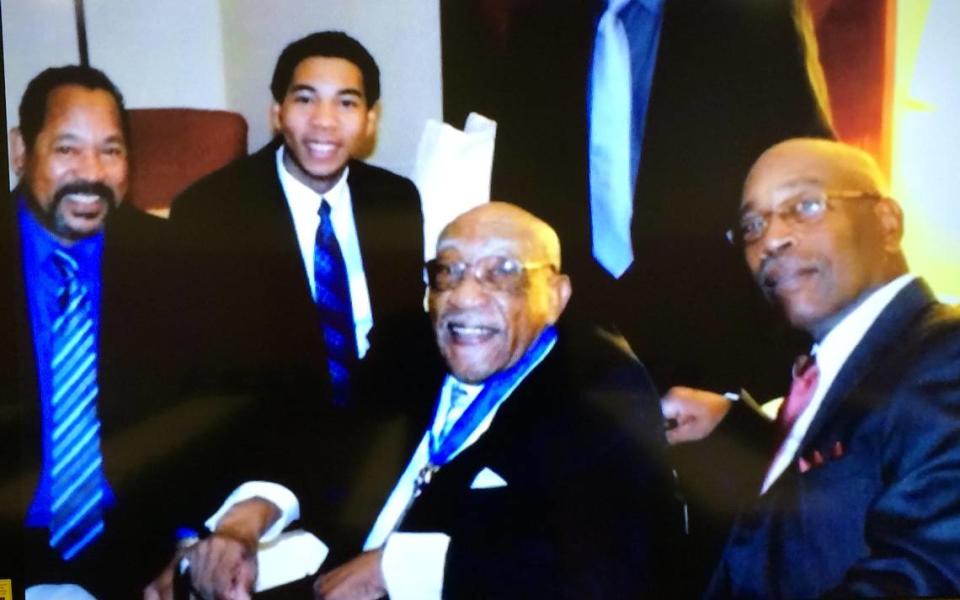
On the Tuesday after Mother’s Day, Hill visited to pick up fallen branches and remove dying blooms from bouquets left for loved ones, careful not to step directly on any burial sites.
Hill is on a mission to renovate and preserve the cemetery.
An unknown number of unmarked graves
The former Moore’s Sanctuary members buried in the cemetery possessed a diverse range of talents — from school teachers to veterans.
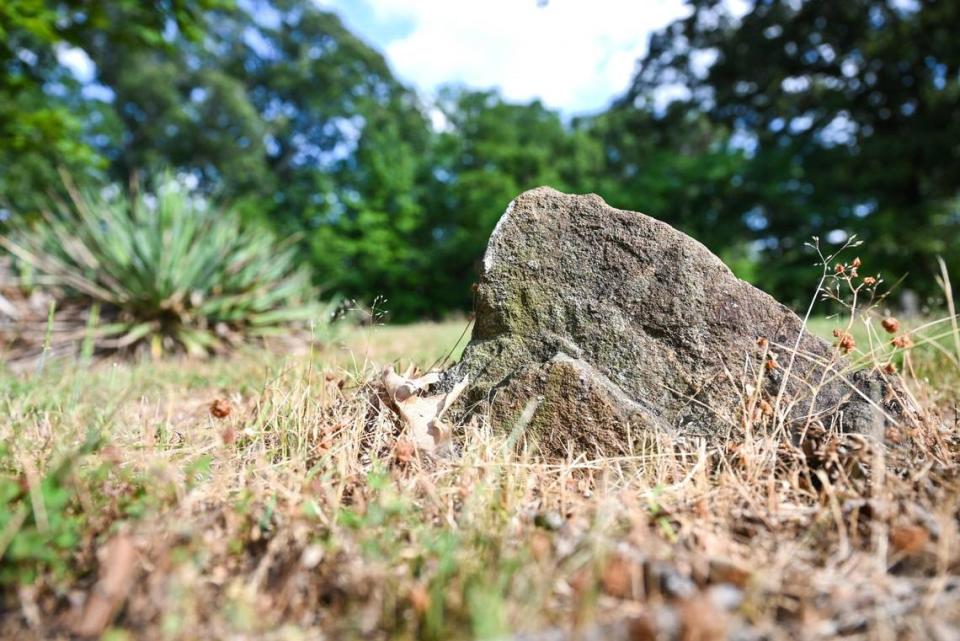
But there’s much left unknown. The church was founded in 1870 while the Queen City was growing rapidly after the American Civil War.
“When the church was started, people didn’t have a lot of money. Illiteracy was prevalent back in those days,” Hill said. “They just put a rock out there. A rock had to suffice for a headstone.”
Hill wants to reinstate a cemetery committee at Moore’s Sanctuary, with the support of Rev. Raymon Hunt, to renovate the graveyard. He hopes to one day bring in experts who can use technology to locate graves to properly identify them.
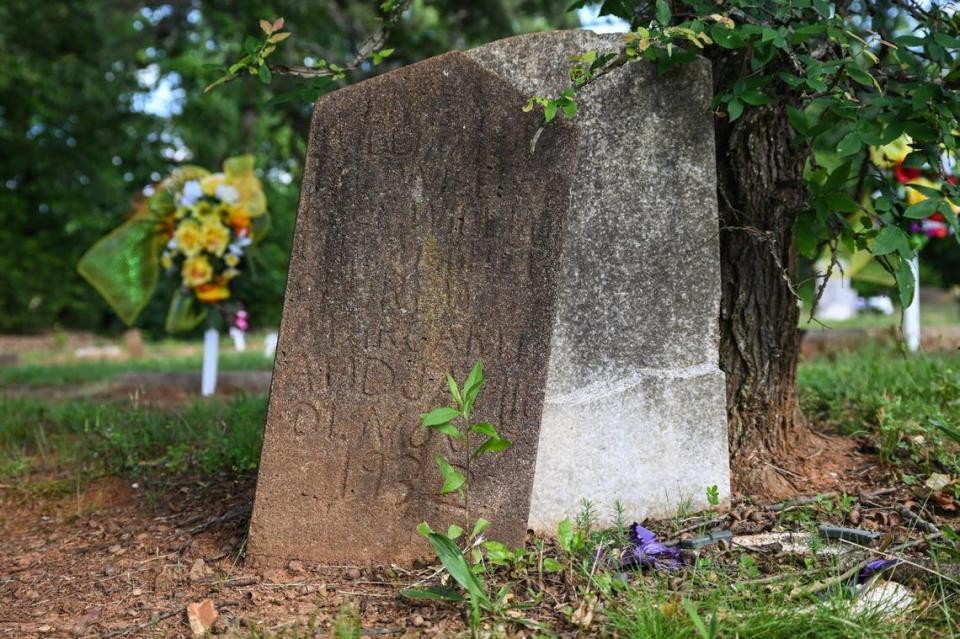
“This is a good way to deal with history of Charlotte,” Hill said. “Every person that’s been buried out here has a story to tell.”
A rich history
Hill, 78, says he’s “pretty much” retired. He worked for years making and installing signs, mostly commercial vehicle lettering.
In his retirement, he’s found more time to spend walking the cemetery grounds, writing and creating. He enjoys singing in the choir on Sunday mornings.
He helped write a historical book for the church, which includes the story of Charles Parker. Born into slavery, Parker went on to become an educator and founding member of Moore’s Sanctuary — but Hill demonstrated Parker’s heroism through his writing.

“Since educating a Black person, in those days, was looked upon as such an egregious and defiant act, the punishment for such a thing, would have been swift and severe; especially for Charles,” Hill wrote in the book.
Moore’s Sanctuary is more than 150 years old and has held worship in three different sanctuaries over that time.
While Hunt hopes a more aesthetically pleasing cemetery will draw people in, it’s equally important visitors leave with understanding the resiliency of their ancestors.
“Neurosurgeons come out of schools like the ones here when the science labs only have two microscopes for the whole class,” Hunt said. “It’s important for the culture to make sure history is preserved.”
Vietnam vets, U.S. president connections, nurses, educators
Here are a few prominent people Hill knows are buried at Moore’s Sanctuary AME Zion:
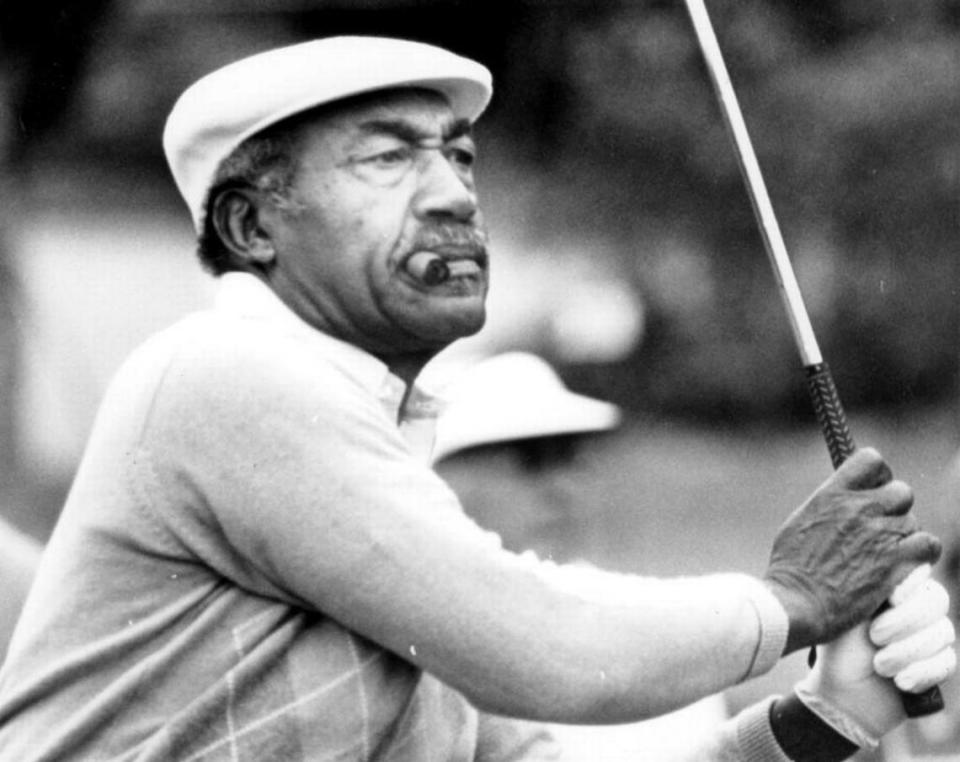
Charles Sifford — The golfing pioneer was born in 1922 in Charlotte and died in 2015. He withstood racial slurs and death threats to break the color barrier in professional golf, according to a 2014 story in The Charlotte Observer. A known trait for Sifford was to always have a cigar in his mouth.
David Allen Knox — Knox was born in 1949 and died in combat in the Vietnam War. He was 19 and was awarded the Purple Heart.
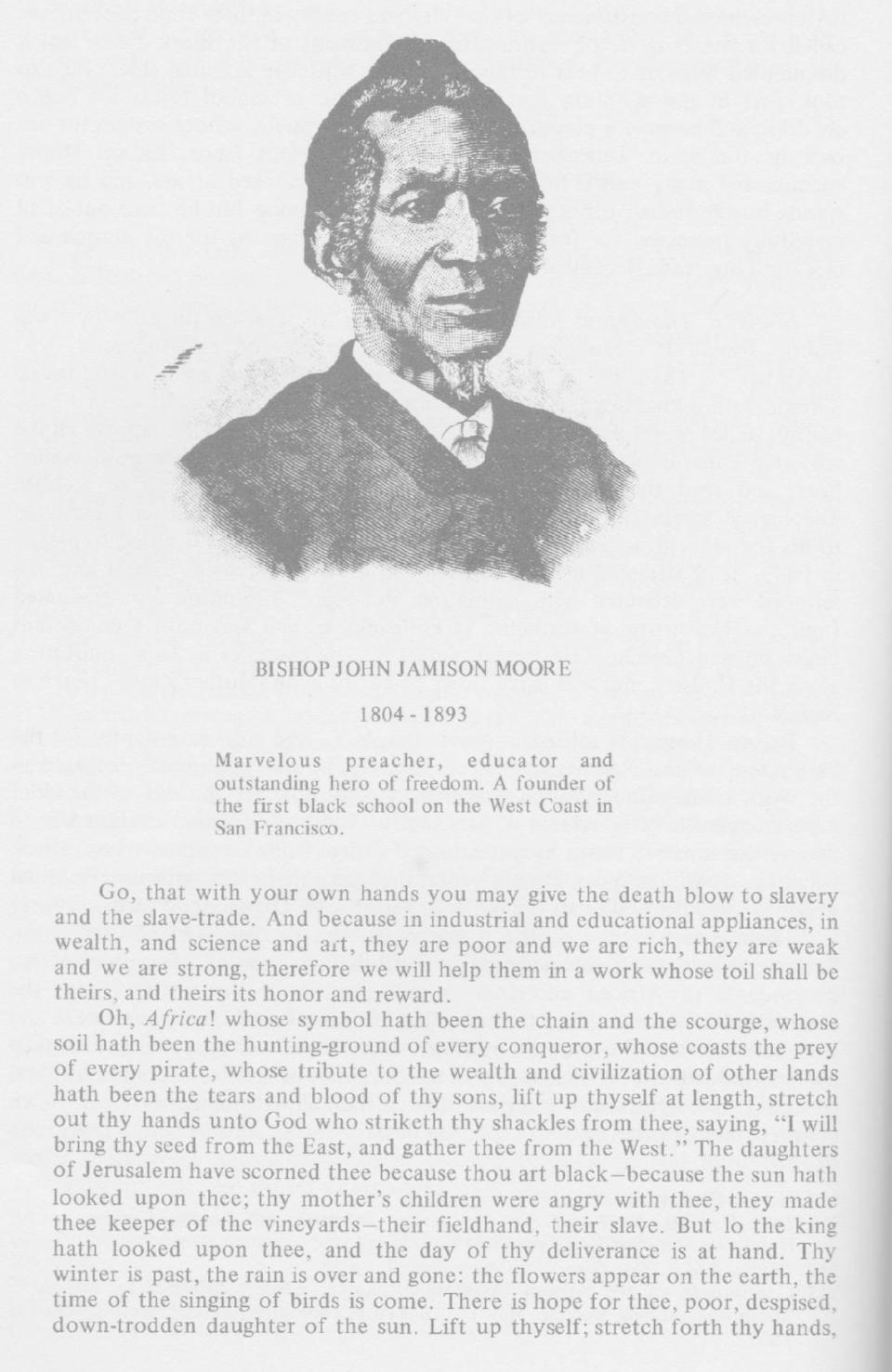
Bishop John Jameison Moore — Born in 1804, Moore founded the west Charlotte church He was known as a preacher, educator and hero of freedom. Moore established the first Black school on the west coast in San Francisco, documentation provided by Hill shows.
“Go, that with your own hands you may give the death blow to slavery and the slave-trade,” one document written by Moore says. “And because in industrial and educational appliances, in wealth, in science, and art, they are poor and we are rich, they are weak and we are strong.”
Richard Bidgood — Born in 1869 and living to 101, Bidgood served as the preacher’s steward at Moore’s Sanctuary for 50 years. He also was a parent teacher’s association chairman for 25 years at Plato Price School, an all-Black Charlotte-Mecklenburg public school before the district was integrated.
F.O. McDonald — Born in 1863, McDonald was one of the founding fathers of the church. He lived until 1936.
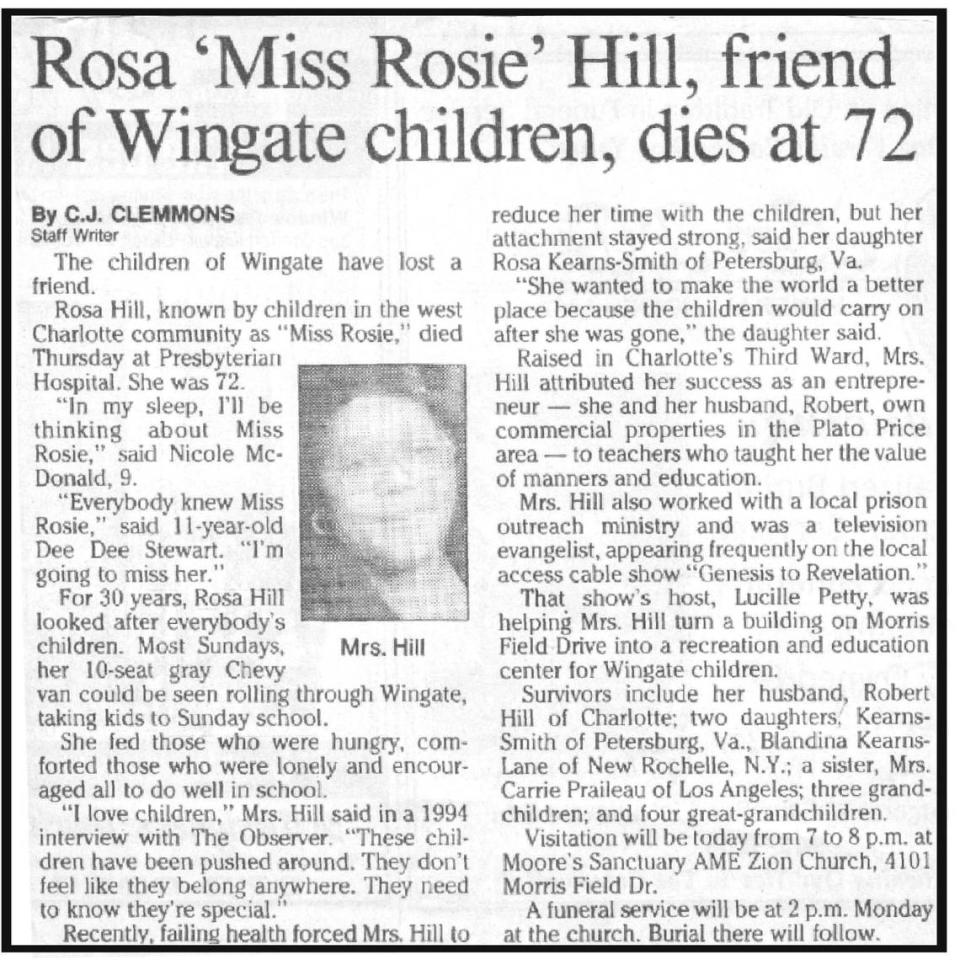
Rosa Lee Hill — A member of Moore’s Sanctuary, Rosa Lee Hill was born in 1922 and grew up to become a Cadillac aficionado. She lent her beloved cars to the church for transportation needs until her death in 1995. Her husband, 91-year-old Robert Hill is William Hill’s first cousin.
Charles H. Parker — Born into slavery in 1844, Parker learned how to read at night in secret with the help of the slave-owners’ sons. In 2021, Barringer Academy was renamed to the Charles H. Parker Center for his lifetime commitment to education and his impact on making Black homeownership possible in Charlotte. He encouraged Black people to buy and hold on to property in the early 1900s. Parker even donated land to Moore’s Sanctuary, according to documents provided by Hill.
“It gives me great pleasure to witness the much deserved recognition and honor, finally given to this great man of God,” Hill wrote about Parker after he was honored by CMS.
Sarah T. Reid — Born in 1905, Reid was a volunteer nurse in Charlotte honored by former President Richard Nixon for her service. She was a Sunday School superintendent at Moore’s Sanctuary.
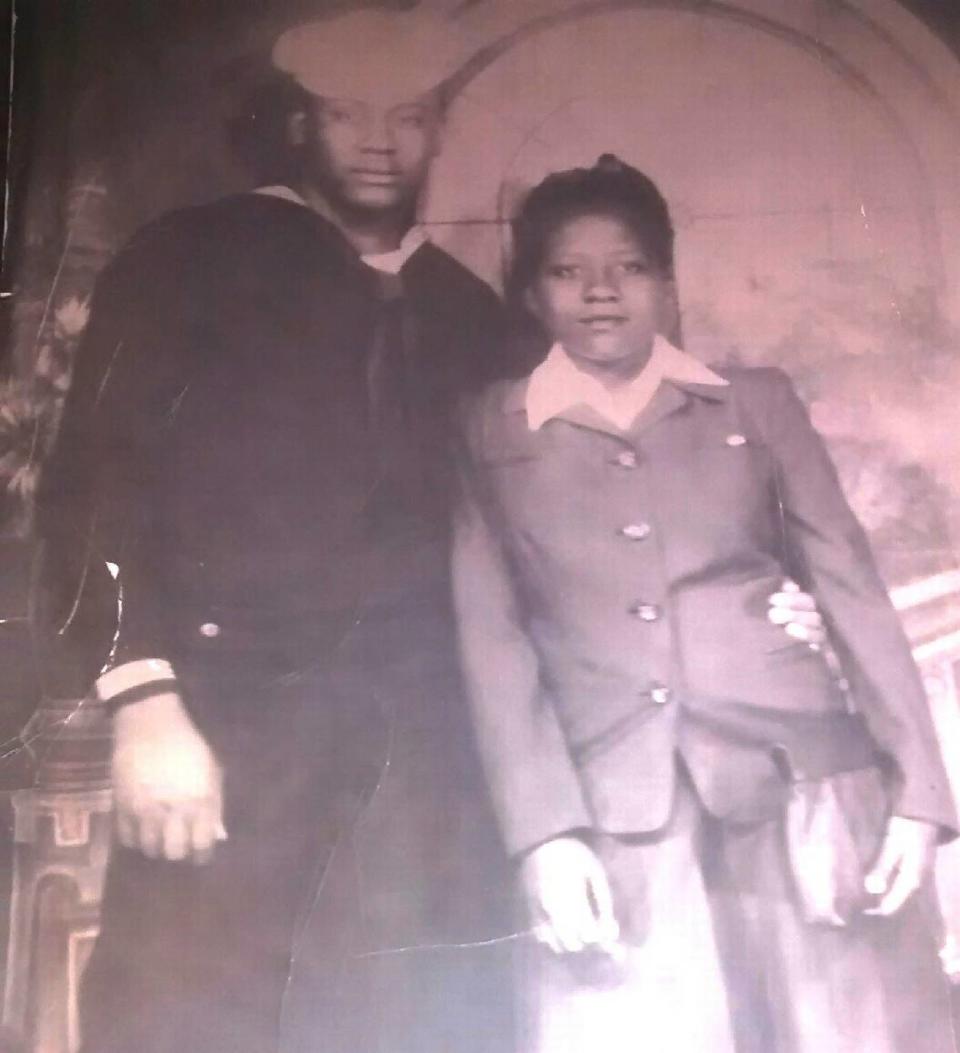
Henry Cooper Jr. — A U.S. Navy Officer, Cooper served on former President John F. Kennedy’s PT-109 boat in World War II.
How are cemeteries preserved?
In February 2022, Congresswoman Alma Adams, D-N.C., introduced legislation that established a preservation program for African American burial grounds. Through the program, the National Parks Service provides grants and technical assistance to research, identify and survey historic sites.
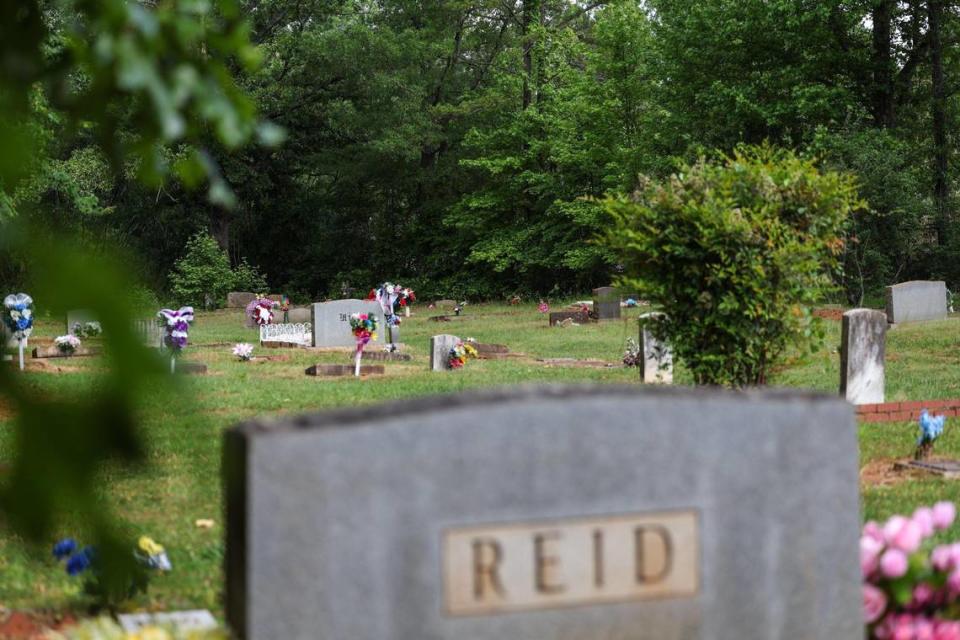
Experts can use ground penetrating radar devices to identify unmarked graves without digging thanks to the technology that provides visualizations of the locations of caskets underground. Once graves are identified, new headstones would be placed above them.
Moore’s Sanctuary hasn’t received public funding or grants yet for the cemetery, but it could be an option, Hill said. The church’s cemetery committee was disbanded during COVID-19, he said, but he’s working to get it back together.
He wants to repair headstones, replace the patchy grass and add shrubberies and landscaping.
“Graveyards, burial grounds, and cemeteries not only honor our ancestors; they’re also an important resource for historians and genealogists who want to tell our history,” Adams said in a news release when the burial ground bill became law. “However, the burial sites of African Americans are often forgotten or ignored.”
Hill won’t let Charlotte forget this cemetery. The history of his church, his family, his race, all lie beneath the earth on this sacred ground.
Filled with the resiliency and hope passed down from his ancestors, Hill hummed a hymn as he continued his walk through the cemetery, studying the headstones he already knows so well.

